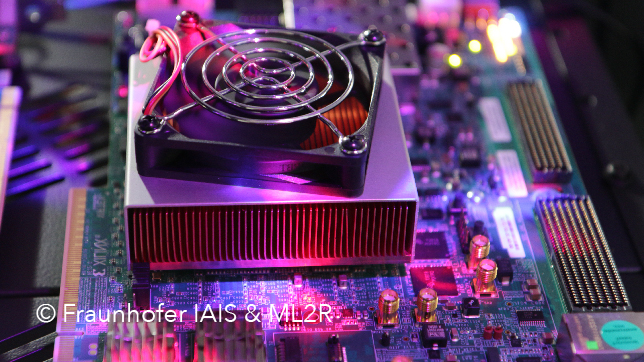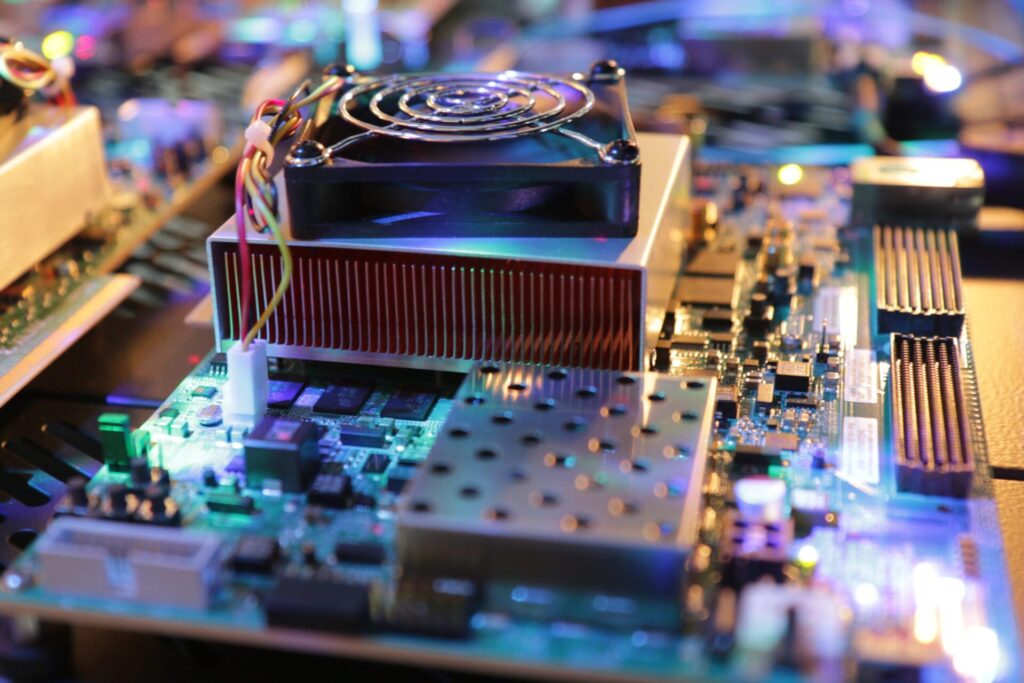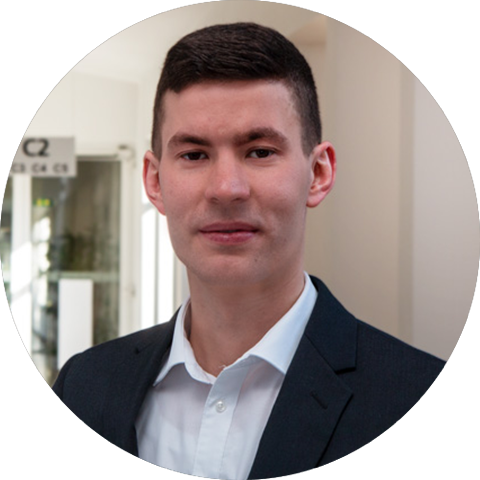
Quantum Computing (QC) promises an extension of traditional computational efficiency with enormous potential. Theoretically, quantum computers have been shown to efficiently solve certain problems in computer science, such as searching large databases (Grover’s algorithm) or factorizing prime numbers (Shor’s algorithm), more efficiently than classical computers. These processes require a so-called gate-based quantum computer. Combinatorial optimization problems in the form of “Quadratic Unconstrained Binary Optimization” (QUBO) problems can also be solved using quantum mechanical principles. Computers that leverage these principles are called quantum annealers or adiabatic quantum computers. To solve them, the adiabatic theorem of quantum mechanics is applied – a quantum-mechanical system in a state of minimal energy remains in such a state during sufficiently slow (adiabatic) changes. The idea is to encode a QUBO, the mathematical problem to be solved, into the energy operator of a quantum-mechanical system. Starting with a simple problem with a known solution and adiabatically transforming it into the desired target problem yields a solution to the target problem.
Encoding
While calculations using the adiabatic principle are relatively new, data and problem encoding have long been integral to computer science. Images, songs, or videos are encoded as binary data. In fact, encoding a QUBO as a Hamiltonian operator is much simpler than encoding a song as an MP3 file.

Operation of quantum annealing. (Left) In the quantum world, it is possible to “tunnel” through energy barriers, whereas in classical physics, the barrier must be overcome. (Right) Through adiabatic evolution of the system, a state of minimal energy is maintained.
QUBOs appear in various industries, such as:
- Route calculations in logistics,
- Portfolio analysis in finance,
- Virtual screening in the production of new pharmaceuticals in pharmaceutical research.
This type of optimization problem is also found in Machine Learning, including clustering problems, Hopfield networks, or probabilistic graphical models. For more details on optimization in machine learning, refer to our blog post in German “Optimization in Machine Learning”.
Although these theoretical results are highly promising, current quantum hardware is not yet capable of reliably executing the aforementioned quantum algorithms. State-of-the-art quantum computers are based on superconducting implementations, which must be cooled to temperatures of a few millikelvin. These implementations are highly susceptible to errors due to external influences, such as the Earth’s magnetic field, making it impossible to execute arbitrarily complex algorithms, unlike classical computers. Cooling and shielding make operating such a quantum computer highly energy -intensive. This led researchers at Fraunhofer IAIS and the Lamarr Institute to develop the IAIS Evo Annealer, preparing for a future era of fault-tolerant Quantum Computing.
IAIS Evo Annealer: Hardware Design and Features
Finding a global solution for a QUBO problem is NP-hard—there is no classical algorithm known to solve every QUBO in polynomial time. This also applies to quantum annealers—here, the annealing time, i.e., the duration of the adiabatic process, can be exponential. However, QUBOs that are hard for classical computers are not necessarily the same as those hard for quantum annealers. Therefore, a quantum annealer may solve a difficult QUBO much faster than a classical computer. Additionally, there are efficient classical methods for addressing QUBO problems. However, these methods are heuristic, and it is not guaranteed that a globally optimal solution can be found. Prominent examples of such approaches include simulated annealing, tabu search, and evolutionary algorithms (EA). EA is inspired by the evolution of natural organisms, applying mutations and recombinations to a set of previous individuals (in our case, solutions to QUBO problems) to obtain new (better) solutions (for more information, see the blog post in German on “Evolutionäre Optimierung von Quantenschaltkreisen”).
Typically, such algorithms are implemented in a high-level language, allowing them to run on a conventional CPU. The abstraction layers of such a high-level language lead to a high number of CPU operations—an overhead that does not exist on a quantum annealer. The basic idea behind the IAIS Evo Annealer is a “hardware implementation” of an EA for QUBO problems. Thus, the IAIS Evo Annealer emulates the behavior of a quantum annealer, as it bypasses the CPU overhead. In addition, some components of the EA have been adjusted to emulate a tunneling effect. A field-programmable gate array (FPGA) is used for the hardware implementation, allowing the realization of custom chip designs without the need to actually produce a chip (for more information on FPGAs, see the blog post in German “Wenn Mikrochips Lernen lernen”.
FPGAs
FPGAs are also used in professional network hardware, allowing the chip’s functionality to be changed at a later time, for example, to close a security gap or to expand functionality.

© Fraunhofer IAIS
The current design of the Evo Annealer allows the evaluation of over 16,000,000 solutions per second, with power consumption ranging from 5 to 10 watts depending on the hardware. For comparison, a typical workstation with a GPU consumes between 500 and 1000 watts. Although the difference here is already a factor of 100, the gap to a real quantum annealer is much larger: Devices from the Canadian company D-Wave, for example, require approximately 16,000 watts. Most of the power is used for cooling and magnetic shielding of the quantum chip. Currently, the IAIS Evo Annealer can solve QUBO problems of size 2048. The D-Wave Advantage System is equipped with 5600 qubits, but hardware restrictions allow it to solve only very specific QUBOs of this size. The underlying qubit topology is not a fully connected graph, meaning not every qubit is directly connected to every other. Therefore, the size of QUBOs is generally limited to 180. The largest available gate-based quantum processor from IBM is equipped with 127 qubits, capable of solving QUBOs of this size.
Due to the superior problem size and low energy consumption of the IAIS Evo Annealer, it can be used both as a bridging technology for Quantum Computing and as a standalone hardware accelerator for QUBOs.
Quantum Readiness
Despite the impressive properties of the IAIS Evo Annealer, it is essential to understand that it only emulates a real quantum annealer. No quantum mechanical effects are exploited, and thus, the full potential of Quantum Computing is not leveraged. However, the IAIS Evo Annealer is extremely energy-efficient, which is an increasingly important characteristic of hardware. Moreover, it is already preparing for the era of fault-tolerant and powerful quantum computers, as QUBO problems formulated now can be solvable on future real quantum annealers.

At Fraunhofer IAIS, one of the four partners of the Lamarr Institute, “Quantum Readiness” is already implemented for use cases from the business sector. The IAIS Evo Annealer allows a preliminary assessment of the potential benefits of Quantum Computing for a specific problem without the need to resort to real quantum hardware.
For more information on the IAIS Evo Annealer:
Fit for the future: Quantum readiness for companies – Fraunhofer IAIS
